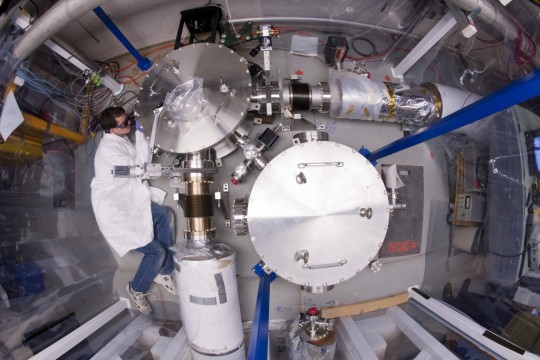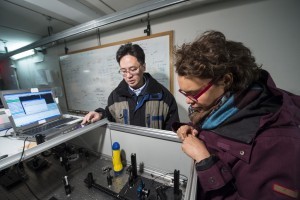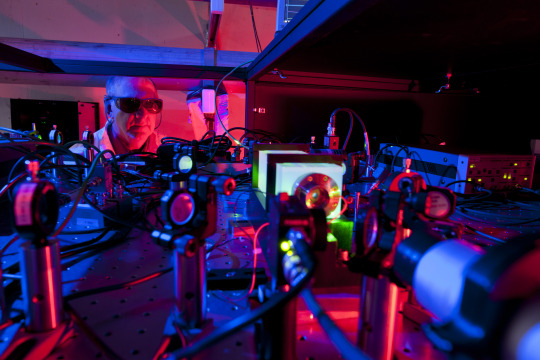The Holometer challenges our assumptions about space and time

A member of the Holometer collaboration works on the sensitive space-time measuring device, located at Fermilab in Illinois. Photo: Fermilab
On their official page, the Fermilab has announced that “there has never been anything like the Holometer.”
Based at the U.S. Department of Energy’s Fermilab in Illinois, the Holometer isn’t much to look at. It’s a small array of lasers and mirrors with a trailer for a control room. But the low-tech look of the device belies the fact that it is an unprecedentedly sensitive instrument, able to measure movements that last only a millionth of a second and distances that are a billionth of a billionth of a meter – a thousand times smaller than a single proton.
Our common sense, and the laws of physics, assumes that space and time are continuous. The Holometer challenges this assumption. We know that energy on the atomic level, for instance, is not continuous and comes in small, indivisible amounts. The Holometer was built to test if space and time behave the same way.

Aaron Chou, project manager of the Holometer, and grad student Brittany Kamai work on the laser beam that powers the Holometer. Photo: Fermilab.
The main theory the Holometer was built to test was posited by Craig Hogan, a professor of astronomy and physics at the University of Chicago and the head of Fermilab’s Center for Particle Astrophysics. In a new result released this week after a year of data-taking, the Holometer collaboration has announced that it has ruled out Hogan’s theory of a pixelated universe to a high level of statistical significance. This means the Holometer did not detect the amount of correlated holographic noise – quantum jitter – that this particular model of space-time predicts.
But as Hogan emphasizes, that’s just one theory, and with the Holometer, this team of scientists has proven that space-time can be probed at an unprecedented level.
“This is just the beginning of the story,” Hogan said. “We’ve developed a new way of studying space and time that we didn’t have before. We weren’t even sure we could attain the sensitivity we did.”
For more about the Holometer and the science involved, visit the Fermilab site.

A scientist works on the laser interferometer at the heart of the Holometer experiment. Photo: Fermilab.
